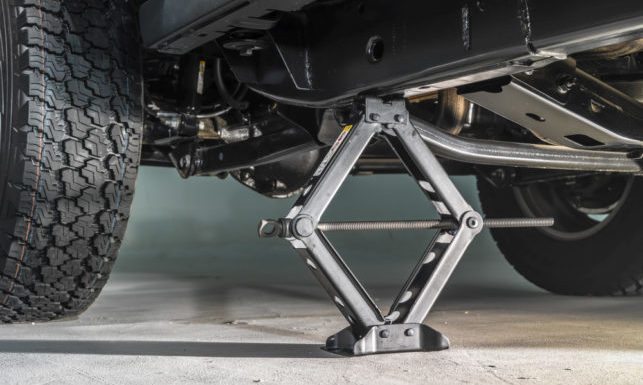
Every new passenger vehicle sold today comes with a jack for use when lifting is required, usually to change a tyre or mechanical repairs. We all know how a jack works but do we all know how to use a jack safely?
For an example between 1989 & 1992, twenty-seven Australians lost their lives from vehicles falling off jacks and ramps that were supposed to be supporting them. Interestingly, while 20 of the victims were home users, 7 were killed while in a place of work, where safety procedures should be known and practised. Why did this happen? In the cases where the cause was identifiable, it was discovered the users had:
- Failed to apply the hand brake on the vehicle.
- Failed to leave the vehicle in gear.
- Not used chocks on the other wheels.
- Incorrectly used the jack.
- Used an inappropriate jack for the job.
- Attempted to jack the vehicle on the sloping or uneven ground.
By ignoring these simple procedures the unfortunate victims paid with their lives.
Always read the instructions that come with your jack and follow them to the letter.
- It’s a very bad idea to stand on the road while using your jack, however sometimes it is unavoidable. If you must do this be sure to light your workspace as much as possible so on-coming traffic can see you. Flares and reflectors are best for this if available. Try to have someone standing beside you facing the traffic and directing it clear if needed.
- Always work on a flat, solid surface. Most jacks do not function safely on uneven or soft surfaces. Air jacks like Selson are the exception to this rule. Its broad base and internal telescopic arm allow the jack to follow the lifting arc of the vehicle on all surfaces and gentle slopes.
- Be sure no one remains in the vehicle. The smallest shake can unsettle the jack. Remove any heavy loads from inside the vehicle.
- Apply the handbrake and leave your vehicle in gear.
- Use chocks on the non-raised wheels.
- Never place any part of your body under the vehicle.
- Never raise the vehicle any higher than necessary.
- Always keep an eye on the jack to see if it’s holding steady. If it looks to be slipping or moving in any way, get away from the vehicle.
Are all jacks equal?
Most cars come with a pentagram or scissor jack. These are adequate for lift about 1/3rd of the weight of the vehicle. As you are only lifting one corner, this is acceptable. In a garage or workshop situation bottle or hydraulic jacks are common. The latter in particular can lift heavier weights than scissor jacks and are considered safer. A more recent addition to the collection is the Selson air jack. Selson air jacks are a unique design that uses compressed air to raise and lower motor vehicles quickly and easily. Their safety, reliability and speed make Selson air jacks ideal for under-body servicing, wheel alignment, tyre replacement services and body repair work.

Kelvin Armstrong Auto Repairs (KAAR) is recognised as the most competent, capable, and reliable automotive repairer west of the Auckland City isthmus.
With fully equipped, state of art facilities in both Avondale and Henderson, KAAR gives a choice of two handy locations for full automotive, mechanical, electrical repairs and servicing for all vehicles, including European makes and models like Audi, VW and BMW.
We cater for all makes and models of cars, vans, 4x4s and light trucks. We service petrol, diesel and hybrid motors.
